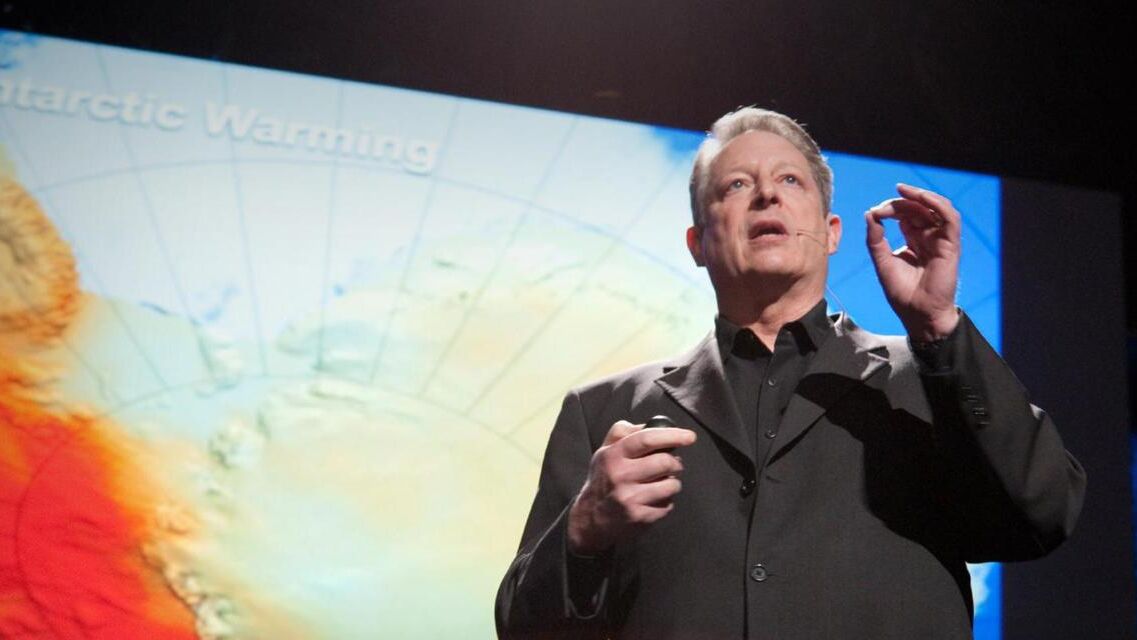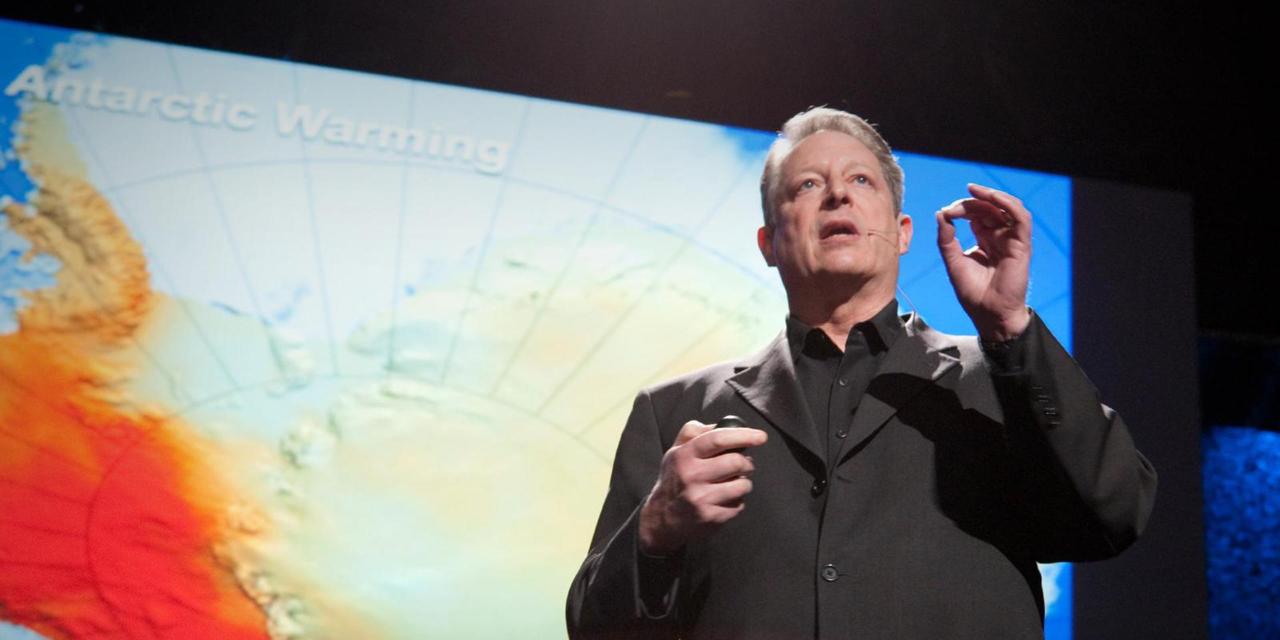In 2006, An Inconvenient Truth transcended what was thought possible from a documentary film and started a movement of cultural awareness toward climate change.
I was in grade school when I saw the film at the Mayan Theater in Denver, CO. While my well-read older sister had been reading about global warming for years prior (thanks to this magazine issue), I consider An Inconvenient Truth to be the beginning of my own journey toward environmental activism, which I continue regularly today, and I was far from alone. From that film’s end credits on, the call to action has dispersed into numerous topics due to the global nature of the issue. For some, the fight is against fossil fuels; for some, the fight is against deforestation and habitat loss; for some, the fight is against excess consumption. The list is long, detailed, and all relevant. Nothing is happening quickly enough, and the problem is worse than anyone hoping to get elected will tell you, so it isn’t a surprise there is room for a sequel to the original, monumental film.
For a sequel to a film that started these offshoot branches, what becomes the point of focus? The sequel doesn’t repeat Al Gore’s presentation of information. In fact, it doesn’t seem like the film is meant for those who are climate skeptics, perhaps intrinsically knowing they are not going to see it. Instead, the filmmakers take an approach of following Al Gore around the world, giving us a view into the in-between moments as he shares this information, confronts skeptics, and in one especially engaging moment, negotiates with government leaders at the Paris Climate Agreements.
Gore’s mission is to educate activists around the world who can help be the messengers to the people and organizations who are fueling an opposing denial. The film is not a deep dive into topics and specific issues. Nor is there a large sense of specific initiatives shown to viewers that they can take home with them. I’m torn because I recognize that of the environmental documentary sub-genre, this will be the one that remains the broadest. It can’t spend time at every place of advocacy, Gore is trying to launch movements from the top-down. But at the same time, Al Gore’s films will have the largest megaphone of their peers: they needed to use it more!
For someone who is already inclined toward this movement, the film is a refreshing reminder that action needs to happen, but it doesn’t offer viewers the action steps in the way it could.To this day I still remember the powerful ending credits to the first film, as a series of legitimate steps rolled across the screen. Gore knows more about the subject than any of us, but I don’t feel like I learned any new ways to take action from this film, and that is an opportunity not properly recycled.
Gore knows more about the subject than any of us, but I don’t feel like I learned any new ways to take action from this film, and that is an opportunity not properly recycled.
I saw this film at an IDA screening that followed with a Q&A hosted by Anne Thompson. The directors of the film, husband-wife duo Bonni Cohen and Jon Shenk, decided to take a more follow-filmmaking approach with their powerful subject, and to their credit, seeing him a bit off the script works well. One of the most interesting things gained from the Q&A was that in reality, Al Gore is still a very damaged, internally conflicted individual, which is fascinating considering how public of a life he lives. It’s impossible to imagine what the 2000 election loss must have felt like for the person at the helm of it; there was no consolation for that moment and the filmmakers suggest he’s still scarred by that. We get some sense of that, but there was much more emotional weight in the first film and I would’ve liked to see this vulnerability as they described. If the movie is going to be all about Gore, it could have leaned a little further. But again, this appeals to someone who already respects him and wants to follow his action plans and with these story critiques, it’s still an important subject for audiences to see.
I make no secret of how important it is to change our habits and take as many steps as possible instead of sitting back and waiting for Al Gore to fix it. And of course, with a President who denies its existence, the only way we’re going to beat it is by doubling down. There’s a fine line between inspiring people to change and scaring away potential allies. But in the spirit of the film, and considering An Inconvenient Sequel lacks potential tangibility for viewers, I want to offer 4 extremely easy consumer steps to help fight climate change:
-
- Cut down on using plastic: There is a garbage patch in the Pacific Ocean twice the size of Texas, primarily full of plastic. We are near the point where there will be more plastic in the oceans than fish. This all comes down to Western society’s throwaway culture, serving everything in single-use containers. There is no need for a single-use straw and the amount that are thrown away every day is insane. Do your part and request no straw with your next drink. (more info: https://onelessstraw.org/)
-
- Stop eating beef: I was thrilled to hear in the Q&A that Al Gore is a vegan now, and yet still perplexed and disappointed this wasn’t once mentioned in the film (I imagine for fear of alienating people to actually change their habits instead of remaining complacent). But the reality is, eating meat, especially at the degree most Americans do, is beyond unsustainable. You can learn much more why facts here: http://www.cowspiracy.com/facts/ However, there are many tasty alternatives, so have no fear, I’ve been off it for years now and frankly, I don’t miss it.
-
- Carbon off-set your flights: Airfare is one of the craziest high contributors to global warming. It is extremely important to reduce the amount of flying one does, and additionally, here are two websites to first calculate and then help reduce your carbon footprint for not too expensive a price:
- And specifically related to this film: After you see the movie, go onto IMDb and give it a fair score. Not saying you have to give it a 10/10, but at the moment it’s not properly represented. The website is notorious for internet trolls, and currently, 1/3 of the votes for this film are a 1/10. These are not film critics’ opinions, they are denialists trying to sabotage it. Every fair rating on IMDb helps counterbalance these folks, a small but noble step.
‘An Inconvenient Sequel’ is rated PG for thematic elements and some troubling images. 98 minutes. Now available for purchase on Blu-Ray and DVD.
H. Nelson Tracey
Nelson is a film director and editor from Denver based in Los Angeles. In addition to writing for Cinemacy, he has worked on multiple high profile documentaries and curates the YouTube channel "Hint of Film." You can check out more of his work at his website, hnelsontracey.com


